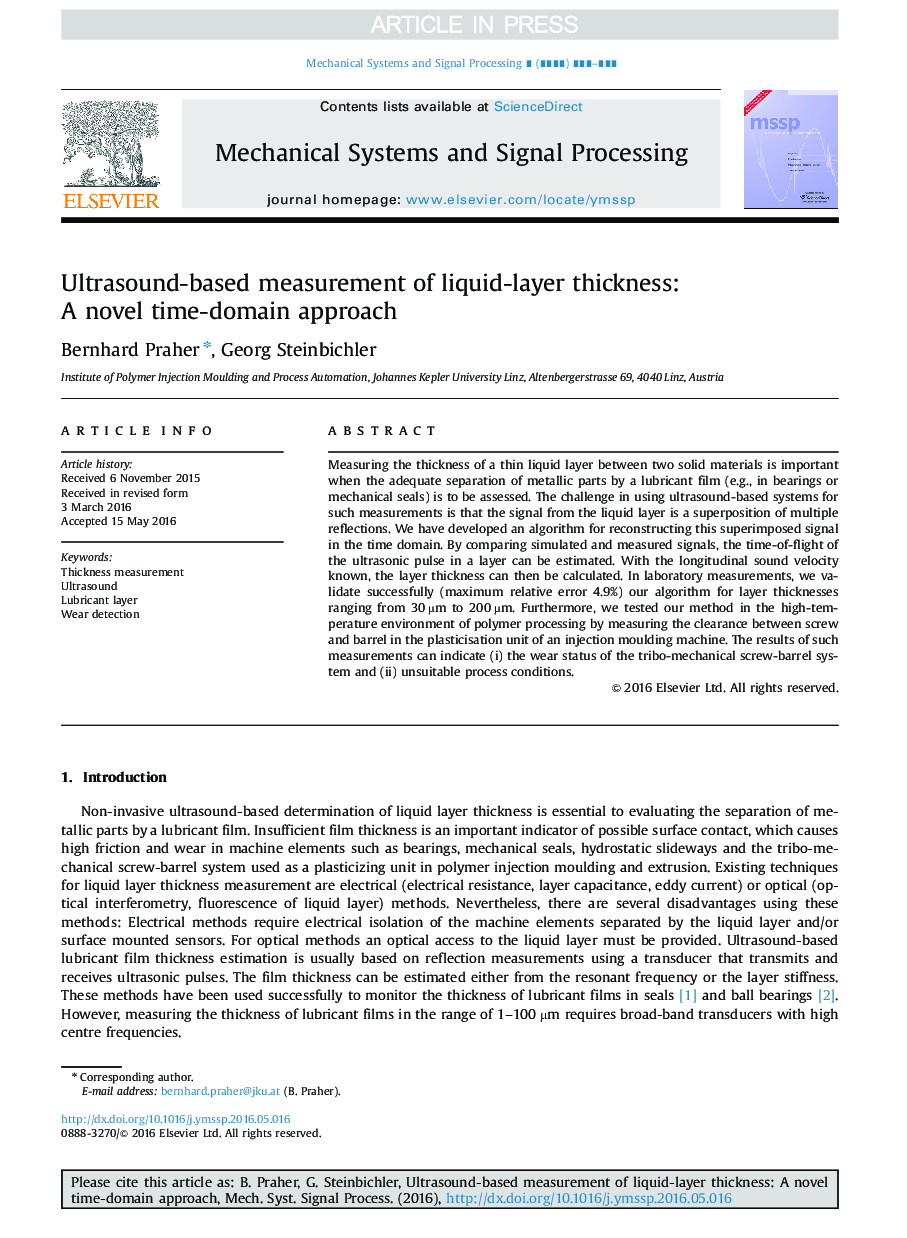| Article ID | Journal | Published Year | Pages | File Type |
|---|---|---|---|---|
| 4977253 | Mechanical Systems and Signal Processing | 2017 | 12 Pages |
Abstract
Measuring the thickness of a thin liquid layer between two solid materials is important when the adequate separation of metallic parts by a lubricant film (e.g., in bearings or mechanical seals) is to be assessed. The challenge in using ultrasound-based systems for such measurements is that the signal from the liquid layer is a superposition of multiple reflections. We have developed an algorithm for reconstructing this superimposed signal in the time domain. By comparing simulated and measured signals, the time-of-flight of the ultrasonic pulse in a layer can be estimated. With the longitudinal sound velocity known, the layer thickness can then be calculated. In laboratory measurements, we validate successfully (maximum relative error 4.9%) our algorithm for layer thicknesses ranging from 30 µm to 200 µm. Furthermore, we tested our method in the high-temperature environment of polymer processing by measuring the clearance between screw and barrel in the plasticisation unit of an injection moulding machine. The results of such measurements can indicate (i) the wear status of the tribo-mechanical screw-barrel system and (ii) unsuitable process conditions.
Related Topics
Physical Sciences and Engineering
Computer Science
Signal Processing
Authors
Bernhard Praher, Georg Steinbichler,
